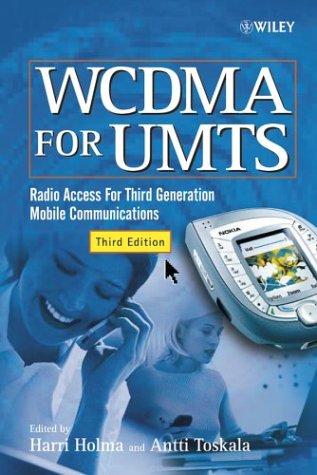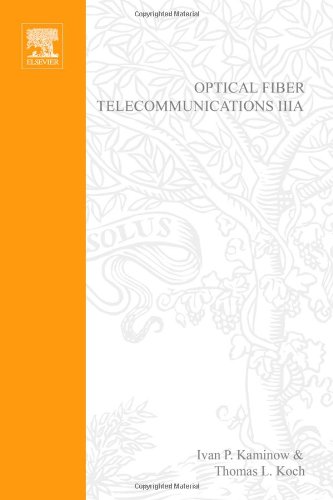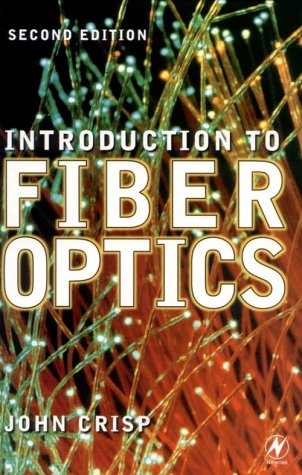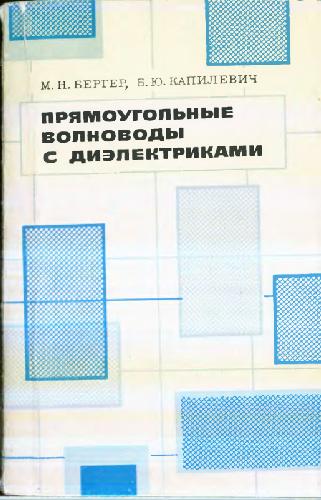K. Fazel, S. Kaiser0470848995, 9780470848999, 9780470871379
Table of contents :
Team DDU……Page 1
Contents……Page 10
Foreword……Page 14
Preface……Page 16
Acknowledgments……Page 18
Introduction……Page 20
1.1.1 Understanding Radio Channels……Page 34
1.1.2 Channel Modeling……Page 35
1.1.3 Channel Fade Statistics……Page 37
1.1.4 Inter-Symbol (ISI) and Inter-Channel Interference (ICI)……Page 38
1.1.5 Examples of Discrete Multipath Channel Models……Page 39
1.1.6 Multi-Carrier Channel Modeling……Page 40
1.1.7 Diversity……Page 41
1.2 Multi-Carrier Transmission……Page 43
1.2.1 Orthogonal Frequency Division Multiplexing (OFDM)……Page 44
1.3 Spread Spectrum Techniques……Page 49
1.3.1 Direct Sequence Code Division Multiple Access……Page 53
1.3.3 Applications of Spread Spectrum……Page 56
1.4.1 Principle of Various Schemes……Page 60
1.4.2 Advantages and Drawbacks……Page 62
1.4.3 Examples of Future Application Areas……Page 63
1.5 References……Page 64
2.1.1 Signal Structure……Page 68
2.1.2 Downlink Signal……Page 69
2.1.4 Spreading Techniques……Page 70
2.1.5 Detection Techniques……Page 76
2.1.6 Pre-Equalization……Page 84
2.1.7 Soft Channel Decoding……Page 86
2.1.8 Flexibility in System Design……Page 91
2.1.9 Performance Analysis……Page 93
2.2.1 Signal Structure……Page 102
2.2.4 Spreading……Page 105
2.2.6 Performance Analysis……Page 106
2.3 References……Page 109
3.1 Introduction……Page 112
3.2 Multi-Carrier FDMA……Page 113
3.2.1 Orthogonal Frequency Division Multiple Access (OFDMA)……Page 114
3.2.2 OFDMA with Code Division Multiplexing: SS-MC-MA……Page 119
3.2.3 Interleaved FDMA (IFDMA)……Page 123
3.3 Multi-Carrier TDMA……Page 124
3.4.1 Pseudo-Random PPM UWB Signal Generation……Page 126
3.4.2 UWB Transmission Schemes……Page 128
3.5 Comparison of Hybrid Multiple Access Schemes……Page 129
3.6 References……Page 131
4 Implementation Issues……Page 134
4.1 Multi-Carrier Modulation and Demodulation……Page 135
4.1.2 Digital Implementation of OFDM……Page 138
4.1.4 D/A and A/D Conversion, I/Q Generation……Page 139
4.2 Synchronization……Page 142
4.2.1 General……Page 144
4.2.2 Effects of Synchronization Errors……Page 145
4.2.3 Maximum Likelihood Parameter Estimation……Page 148
4.2.4 Time Synchronization……Page 151
4.2.5 Frequency Synchronization……Page 155
4.3 Channel Estimation……Page 158
4.3.1 Two-Dimensional Channel Estimation……Page 159
4.3.2 One-Dimensional Channel Estimation……Page 162
4.3.3 Filter Design……Page 163
4.3.4 Implementation Issues……Page 164
4.3.5 Performance Analysis……Page 166
4.3.6 Time Domain Channel Estimation……Page 170
4.3.7 Decision Directed Channel Estimation……Page 171
4.3.8 Blind and Semi-Blind Channel Estimation……Page 172
4.3.9 Channel Estimation in MC-SS Systems……Page 173
4.4 Channel Coding and Decoding……Page 177
4.4.2 Concatenated Convolutional and Reed–Solomon Coding……Page 178
4.4.3 Turbo Coding……Page 181
4.4.4 OFDM with Code Division Multiplexing: OFDM-CDM……Page 185
4.5.1 Signal Constellation and Mapping……Page 186
4.5.2 Equalization and Demapping……Page 188
4.6 Adaptive Techniques in Multi-Carrier Transmission……Page 189
4.6.2 Adaptive Channel Coding and Modulation……Page 190
4.7 RF Issues……Page 191
4.7.1 Phase Noise……Page 192
4.7.2 Non-Linearities……Page 196
4.7.3 Narrowband Interference Rejection in MC-CDMA……Page 204
4.7.4 Link Budget Evaluation……Page 207
4.8 References……Page 208
5.1 Introduction……Page 214
5.2.1 Objectives……Page 217
5.2.2 Network Topology and Basic Concept……Page 218
5.2.3 System Parameters……Page 219
5.3 Wireless Local Area Networks……Page 222
5.3.1 Network Topology……Page 224
5.3.3 IEEE 802.11a, HIPERLAN/2, and MMAC……Page 225
5.3.4 Transmission Performance……Page 227
5.4 Fixed Wireless Access below 10 GHz……Page 229
5.4.1 Network Topology……Page 230
5.4.3 Multi-Carrier Transmission Schemes……Page 231
5.5 Interaction Channel for DVB-T: DVB-RCT……Page 239
5.5.1 Network Topology……Page 240
5.5.3 Multi-Carrier Uplink Transmission……Page 242
5.5.4 Transmission Performance……Page 248
5.6 References……Page 249
6.1 Introduction……Page 252
6.2 General Principle of Multiple Antenna Diversity……Page 253
6.2.1 BLAST Architecture……Page 254
6.2.2 Space–Time Coding……Page 255
6.2.3 Achievable Capacity……Page 258
6.3.1 Transmit Diversity……Page 259
6.3.2 Receive Diversity……Page 263
6.3.3 Performance Analysis……Page 264
6.3.4 OFDM and MC-CDMA with Space–Frequency Coding……Page 267
6.4.1 UMTS-WCDMA……Page 272
6.4.2 FWA Multi-Carrier Systems……Page 273
6.5.1 General……Page 274
6.5.2 Basic Concept……Page 276
6.5.3 MC-CDMA-Based Software-Defined Radio……Page 277
References……Page 279
Definitions……Page 282
Abbreviations……Page 284
Symbols……Page 289
Index……Page 294







Reviews
There are no reviews yet.